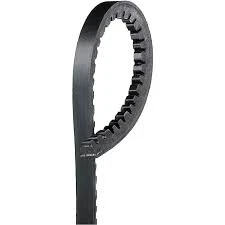- Arabic
- French
- Russian
- Spanish
- Portuguese
- Turkish
- Armenian
- English
- Albanian
- Amharic
- Azerbaijani
- Basque
- Belarusian
- Bengali
- Bosnian
- Bulgarian
- Catalan
- Cebuano
- Corsican
- Croatian
- Czech
- Danish
- Dutch
- Afrikaans
- Esperanto
- Estonian
- Finnish
- Frisian
- Galician
- Georgian
- German
- Greek
- Gujarati
- Haitian Creole
- hausa
- hawaiian
- Hebrew
- Hindi
- Miao
- Hungarian
- Icelandic
- igbo
- Indonesian
- irish
- Italian
- Japanese
- Javanese
- Kannada
- kazakh
- Khmer
- Rwandese
- Korean
- Kurdish
- Kyrgyz
- Lao
- Latin
- Latvian
- Lithuanian
- Luxembourgish
- Macedonian
- Malgashi
- Malay
- Malayalam
- Maltese
- Maori
- Marathi
- Mongolian
- Myanmar
- Nepali
- Norwegian
- Norwegian
- Occitan
- Pashto
- Persian
- Polish
- Punjabi
- Romanian
- Samoan
- Scottish Gaelic
- Serbian
- Sesotho
- Shona
- Sindhi
- Sinhala
- Slovak
- Slovenian
- Somali
- Sundanese
- Swahili
- Swedish
- Tagalog
- Tajik
- Tamil
- Tatar
- Telugu
- Thai
- Turkmen
- Ukrainian
- Urdu
- Uighur
- Uzbek
- Vietnamese
- Welsh
- Bantu
- Yiddish
- Yoruba
- Zulu
Dis . 19, 2024 03:59 Back to list
Replacement PK Belt Fan Belt for Automotive Applications and Performance
Understanding the Importance of PK Belt Fan Belts for Automotive Performance
When it comes to automotive maintenance and performance, every component plays a crucial role in ensuring the vehicle operates smoothly and efficiently. One such critical component is the PK (poly V) belt, commonly referred to as a fan belt. Understanding its importance, functions, and maintenance can not only enhance the performance of your vehicle but also extend the lifespan of various engine components.
What is a PK Belt Fan Belt?
The PK belt, or poly V belt, is a type of serpentine belt used to drive multiple peripheral devices in an automobile engine. This includes components like the alternator, power steering pump, water pump, and air conditioning compressor. Unlike traditional V-belts that have a single groove, PK belts are designed with multiple grooves, allowing them to engage with several pulleys simultaneously. This design enhances the efficiency of power transfer from the engine to the various accessories, reducing energy loss and improving overall vehicle performance.
The Role of the PK Belt Fan Belt
The primary function of the PK belt is to transmit power from the engine to the car's auxiliary components. Here’s how it impacts the vehicle’s performance
1. Power Transmission The PK belt ensures that essential components such as the alternator, which charges the battery, and the water pump, which maintains engine temperature, receive the necessary power to operate efficiently.
2. Fuel Efficiency A well-functioning PK belt can contribute to better fuel efficiency. When the belt is in good condition, it minimizes losses due to slippage, helping the engine run more efficiently and consume less fuel.
3. Performance and Reliability A worn or damaged PK belt can lead to poor performance, causing parts to function improperly or fail entirely. For example, if the alternator is not spinning at the right speed, it may not charge the battery adequately, which can lead to starting issues.
pk belt fan belt for auto

4. Engine Cooling The PK belt is integral in driving the water pump, which is essential for cooling the engine. Overheating can cause significant damage, and a functioning belt facilitates the cooling system's optimal operation.
Signs of a Worn PK Belt
Recognizing the signs of a failing PK belt is crucial for maintaining vehicle health. Some common indicators of a worn or damaged belt include
- Squeaking or Chirping Noises If you hear unusual noises coming from the engine bay, it may suggest the belt is loose, worn, or has developed cracks. - Wear and Cracks Regular inspection of the belt for visible signs of aging, such as fraying, cracking, or glazing, can help in early detection of problems. - Dim Lights or Electrical Issues If the belt is not properly functioning, it can result in poor power delivery to the alternator, causing flickering lights or electrical malfunctions.
Maintenance Tips
To ensure the longevity and efficiency of your PK belt fan belt, consider the following maintenance tips
- Regular Inspections Conduct periodic inspections of the belt for signs of wear and tear, especially before long trips. - Tension Checks Ensure the belt has the correct tension. A loose belt can slip, while a belt that is too tight can put undue stress on the pulleys and bearings. - Replacement Most manufacturers recommend replacing the PK belt every 60,000 to 100,000 miles, but always consult your vehicle’s owner's manual for specific guidelines.
Conclusion
The PK belt fan belt is a vital component in your vehicle's operation, enhancing performance, efficiency, and reliability. Regular maintenance and timely replacements can prevent many common issues, ensuring that your vehicle runs smoothly for years to come. By paying attention to this often-overlooked component, you can help keep your vehicle in top-notch condition, protecting your investment and enhancing your driving experience.
-
Korean Auto Parts Timing Belt 24312-37500 For Hyundai/Kia
NewsMar.07,2025
-
7PK2300 90916-T2024 RIBBED BELT POLY V BELT PK BELT
NewsMar.07,2025
-
Chinese Auto Belt Factory 310-2M-22 For BMW/Mercedes-Benz
NewsMar.07,2025
-
Chinese Auto Belt Factory 310-2M-22 For BMW/Mercedes-Benz
NewsMar.07,2025
-
90916-02660 PK Belt 6PK1680 For Toyota
NewsMar.07,2025
-
drive belt serpentine belt
NewsMar.07,2025

